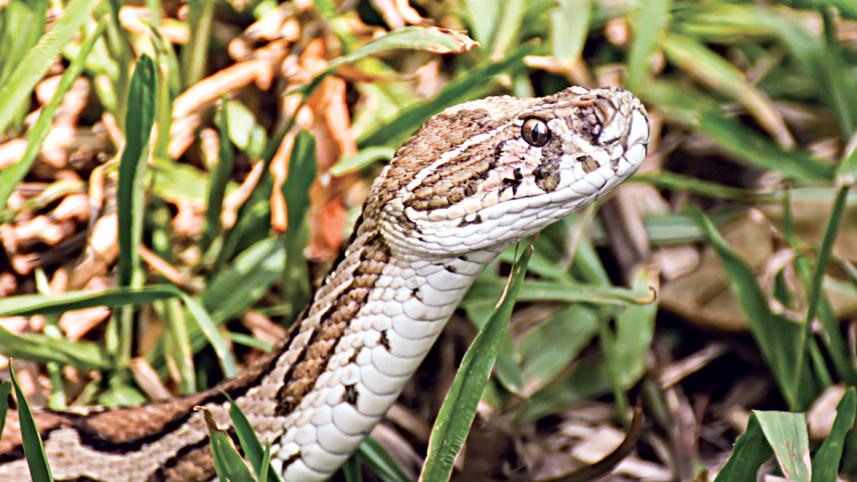The Russell’s viper conundrum

Russell's viper is not a snake species of a foreign land, rather they have coexisted in the natural ecosystem of the Indian sub-continent for centuries.
Although the name gives off a mysterious vibe, these vipers also have a simple Bangla name -- Chandrabora.
These snakes are in fact, beneficial, especially to farmers, as they mainly feed on rats on agricultural lands.
Recently, however, their population has proliferated. This surge is linked to the decline of their natural predators -- mongooses, monitor lizards, forest cats, eagles, and cranes due to indiscriminate hunting.
Misinformation on social media fueled panic, leading people to kill any snake they saw, fearing it was a deadly viper. In the frenzy, many harmless snakes lost their lives.
At least eight snakes -- four buff striped keelback, one python and common wolf snake, and two Siebold's snakes -- were killed in a single week.
Additionally, at least 16 Russell's vipers were beaten to death in the last two weeks, eight in Rajshahi, five in Munshiganj, two in Faridpur, and one in Madaripur, as per local administration and forest officials.
Russell's viper is protected under the Wildlife (Conservation and Security) Act, 2012, as it plays a crucial role in controlling rodent population and its venom is used to produce life-saving medicines. Killing these snakes is a punishable offense.
Meanwhile, nine people have died from Russell's viper bites in the last three months, with five deaths in Manikganj, three in Rajbari, and one in Faridpur.
Experts have pointed fingers at the government, criticising their lack of public awareness campaigns.
Timely medical interventions, like cleaning the wound and getting anti-venoms from government public hospitals nearby can cure a snake bite victim completely within a short time, the experts said.
Health Minister Dr Samanta Lal Sen has instructed public hospitals to maintain an adequate stock of anti-venom.
"The most important task is to take snakebite victims to a doctor at the quickest possible time... timely medical intervention can fully cure snakebite victims through proper treatment," he said.
INADEQUATE AWARENESS CAMPAIGNS
In Bangladesh, there are around 100 snake species, with 37 being venomous, including Russell's viper.
A 2018 study by Professor Farid Ahsan of Chittagong University suggested arranging training for medical staff and awareness campaigns for people in areas where such snakes are present.
However, after talking to government officials from 14 districts, this correspondent found that campaigns were conducted in only five districts.
Forest officials of these districts said they did not get any direction from the ministry.
Imran Ahmed, conservator of forests at the Wildlife and Nature Conservation Circle, admitted that awareness programmes are inadequate.
As such, people resort to killing snakes after being misled by rumours.
"We are issuing letters to involve local administration in awareness raising activities and developing long-term plans to overcome the panic," he added.
WHY THE POPULATION BOOM
Killing natural predators of the viper is the main reason behind their increase in number.
Besides, an improved irrigation system now allows year-round crop cultivation, increasing the rodent population, which is the snake's main food source, said Kamrul Hasan, professor of Zoology at Jahangirnagar University.
Also, rising temperatures in the Rajshahi-Barendra region have increased the female snake population to 80 percent, he said.
Russell's Vipers, being good swimmers, have spread from Rajshahi to other riverside districts via the Padma.
As many as 235 people were treated at Rajshahi Medical College Hospital over 11 years after being bitten by the viper, shows RMCH data.
Around 29 people have died in the region during this time. They were mostly brought in after it was too late, RMCH sources said.




 For all latest news, follow The Daily Star's Google News channel.
For all latest news, follow The Daily Star's Google News channel.
Comments